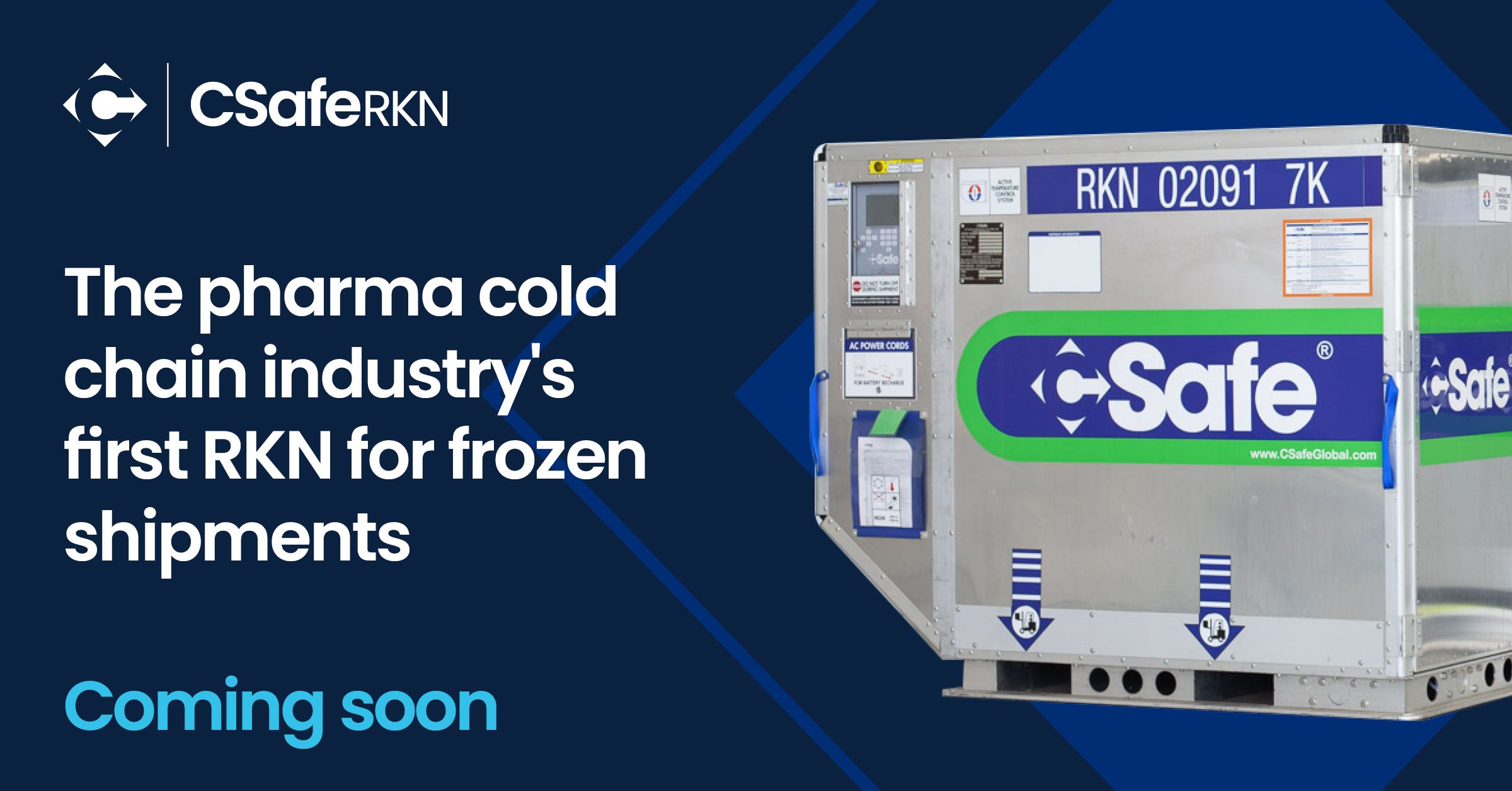MONROE, Ohio, July 11, 2023 – CSafe, the largest provider of a complete range of active and passive temperature-controlled shipping solutions for the pharmaceutical industry, announced today that the company will expand its active bulk air cargo container portfolio to integrate a new -20°C temperature setpoint for the CSafe RKN.
The company will begin offering CSafe RKNs with the new frozen temperature setpoint on the control panel early next year. The CSafe RKN design requires minimal adjustment to accommodate the new -20°C temperature setpoint, limiting the need for additional customer training to take advantage of the new temperate profile.
 “Our engineering team designed our RKN in a way that we could easily add frozen temperature setpoints in the future,” said CSafe Chief Operating Officer, Tom Weir. “Every CSafe RKN is built with patented high-performance VIP insulation and an innovative air recirculation system that envelops the entire payload. Combined with our industry-leading preventive maintenance rebuild program and support from our global service network, these technologies and service programs have delivered reliable temperature control and exceptional battery life for 15 years.”
“Our engineering team designed our RKN in a way that we could easily add frozen temperature setpoints in the future,” said CSafe Chief Operating Officer, Tom Weir. “Every CSafe RKN is built with patented high-performance VIP insulation and an innovative air recirculation system that envelops the entire payload. Combined with our industry-leading preventive maintenance rebuild program and support from our global service network, these technologies and service programs have delivered reliable temperature control and exceptional battery life for 15 years.”
 “This expansion of our high-performing active bulk air cargo portfolio is yet another example of CSafe’s on-going commitment to delivering new innovations to meet the changing needs of the biopharma industry,” added CSafe Chief Executive Officer, Patrick Schafer. “We are passionate about ensuring life-saving and life-enhancing medicines can be safely delivered to patients around the world. With this latest capability, CSafe offers an unmatched range of temperature profiles that can meet virtually every requirement for customers shipping these high-value therapies.”
“This expansion of our high-performing active bulk air cargo portfolio is yet another example of CSafe’s on-going commitment to delivering new innovations to meet the changing needs of the biopharma industry,” added CSafe Chief Executive Officer, Patrick Schafer. “We are passionate about ensuring life-saving and life-enhancing medicines can be safely delivered to patients around the world. With this latest capability, CSafe offers an unmatched range of temperature profiles that can meet virtually every requirement for customers shipping these high-value therapies.”
CSafe RKNs with the -20°C setpoint capability will be available for lease in early 2024. Additional details include:
- Predictive and real-time analysis pre- and post-shipment to assess lane risk based on external data sources, such as flight tracking, inclement weather, etc.;
- total visibility to conditional data in addition battery level percentage and door open/close events;
- sustainable design providing a lower energy active system to maintain optimum performance, while still operating at the broadest RKN ambient operating temperature range in the industry; and
- optimal footprint for all wide-bodied aircraft, ground transportation and warehouse operations.

